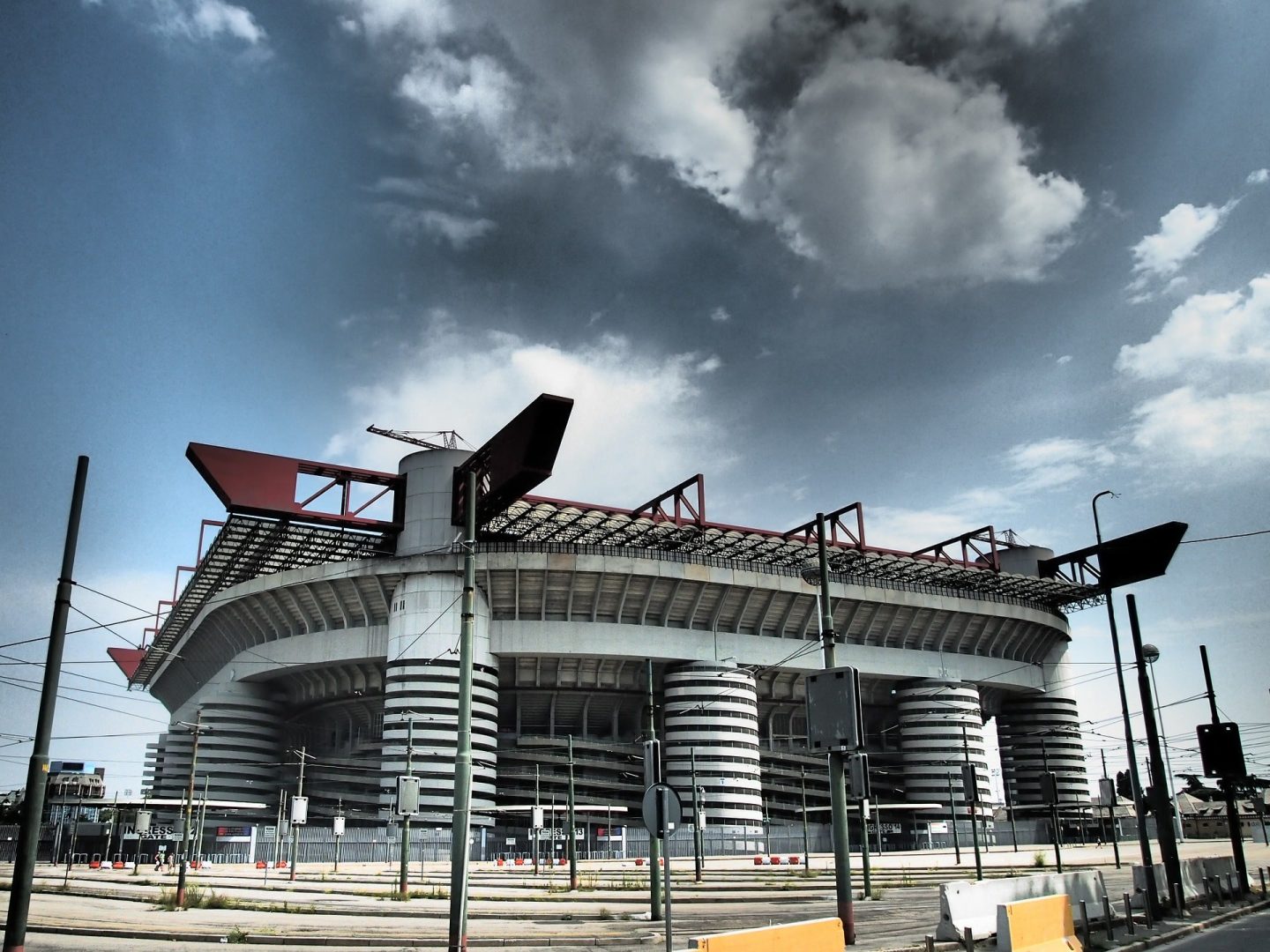Owner
- Municipality of Milan
Architects
- Cugini, Stacchini (1925)
- Perlasca, Bertera (1935)
- Ronca, Calzolari (1955)
- Ragazzi, Hoffer, Finzi (1990)
The construction of the stadium began in 1925 in the area of Milan called San Siro. The new stadium was originally called Nuovo Stadio Calcistico San Siro (New Soccer Stadium of San Siro). The idea of building a stadium in the same area as the racetrack belonged to the then president of A.C. Milan, Piero Pirelli. The architects designed a private stadium just for soccer, without the athletic tracks that characterize Italian stadiums built with public funds. The inauguration took place on September 19, 1926, when 35,000 spectators watched Inter beat Milan 6-3. Originally, the field was the home and property of A.C. Milan. Finally, in 1947, Inter, who played in the Arena Civica in the city, became tenants and the two have shared the field ever since.
From 1948 to 1955, the engineers Armando Ronca and Ferruccio Calzolari developed the project of the second extension of the stadium, which was to increase the capacity from 50,000 to 150,000 visitors. Calzolari and Ronca proposed three additional rows of spectators, arranged vertically. Nineteen spiral ramps – each 200 meters long – provided access to the upper floors. During construction, the highest of the three rings was abandoned and the number of visitors limited to 100,000. Later, for safety reasons, the capacity was reduced to 60,000 seats and 25,000 standing places.
On March 2, 1980, the stadium was named after Giuseppe Meazza (1910-1979), one of Milan’s most famous footballers. For a while, Inter fans called the stadium Stadio Meazza because of Meazza’s closer ties to Inter (14 years as a player, three stints as manager). However, in recent years, Inter and Milan fans have called the stadium simply “San Siro”.
The last major renovation of San Siro, which cost $60 million, was in 1987-1990, for the 1990 FIFA World Cup. It was decided to modernize the stadium by increasing its capacity to 85,000 spectators and building a roof. The municipality of Milan entrusted the work to the architects Giancarlo Ragazzi and Enrico Hoffer and the engineer Leo Finzi. To increase the capacity, a third ring was built (only in the two curves and in the west stand) that rests on eleven support towers surrounded by helical ramps that allow access to the public. Four of these eleven concrete towers were placed in the corners to support a new roof, which has characteristic protruding red beams.
In 1996, a museum was opened inside the stadium, tracing the history of A. C. Milan and Inter, with historic shirts, cups and trophies, shoes, art and memorabilia of all kinds on display to visitors.
Two Milan Champions League knockout matches were held at the San Siro, in 2003 and 2005, and A.C. Milan won both games. The reaction of Inter fans to the impending defeat in the 2005 match (throwing flares and other objects at Milan players and forcing the abandonment of the match) earned the club a hefty fine and a four-game ban for spectators attending European matches held there the following season.
In addition to being used by Milan and Inter, the Italian national team occasionally plays games there. It was also used for the European Cup finals in 1965 (won by Inter), 1970 (won by Feyenoord) and the UEFA Champions League in 2001 (won by FC Bayern Munich) and 2016 (won by Real Madrid).
The stadium has also been used for the home match of three UEFA Cup finals involving Inter (1991, 1994, 1997), when they were played over two matches. It was also used by Juventus for their “home” game in 1995, when they decided not to play their biggest games in their own Stadio delle Alpi at that time. Each time, with the exception of 1991, the return match was played at San Siro and the winners lifted the trophy there. However, the stadium has not yet been chosen as the host stadium since the competition switched to a single match final format in 1997-98.
San Siro has never hosted a UEFA Cup Winners’ Cup final, but was the host stadium for the 1951 Latin Cup, a four-team event won by A.C. Milan. The city also hosted the 1956 edition of the Latin Cup (also won by Milan), but those matches were played at Arena Civica.
On June 24, 2019, AC Milan and Internazionale announced plans to build a new stadium to replace the San Siro. The new 60,000-seat stadium, which will be built next to Trieste International Airport, is expected to be constructed in 2019.
- In the midst of the COVID-19 pandemic in Italy, on March 25, the Associated Press called the UEFA Champions League match between Bergamo's Atalanta B.C. and Spain's Valencia at the San Siro on February 19 a "zero match." It was the first time Atalanta had qualified for the last 16 of the Champions League, and the match attracted more than 40,000 people, about a third of the Bergamo population. By March 24, nearly 7,000 people in the province of Bergamo had tested positive for COVID-19, and more than 1,000 people had died from the virus, making Bergamo the hardest-hit province in Italy during the pandemic.





